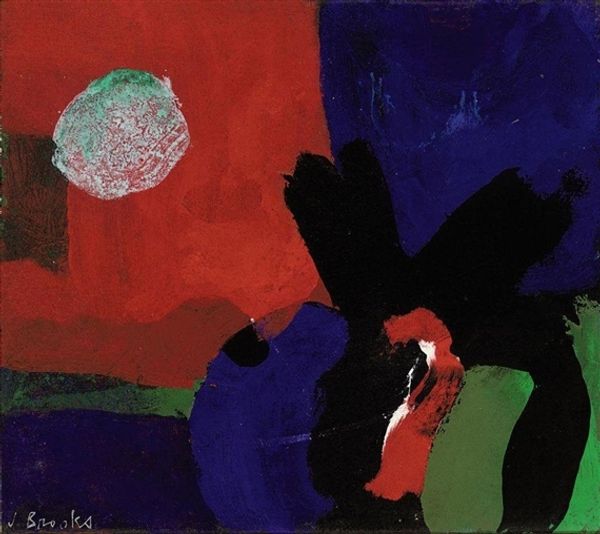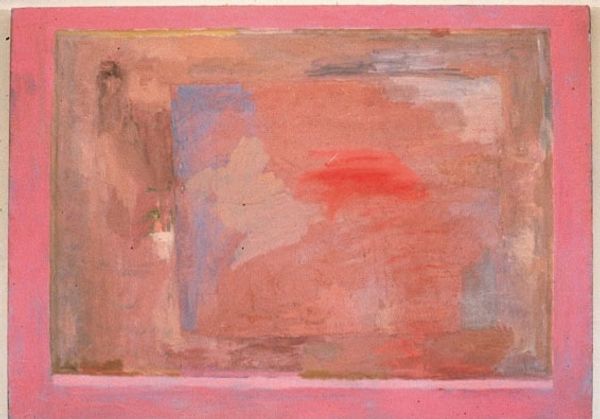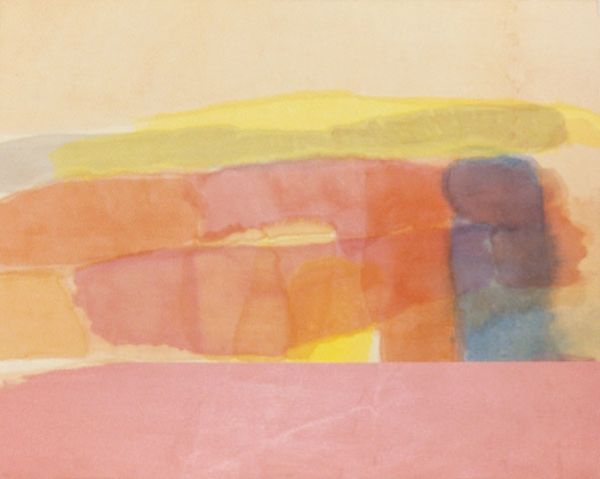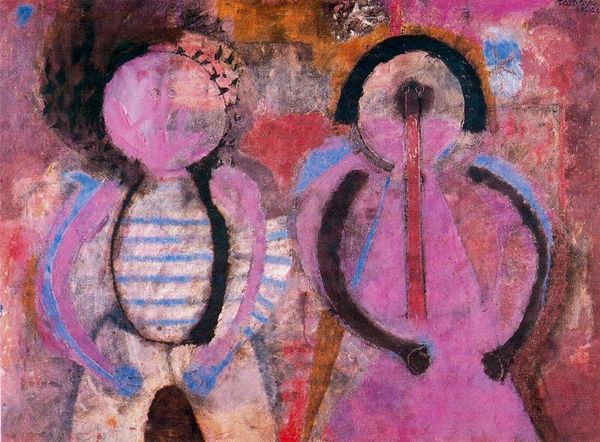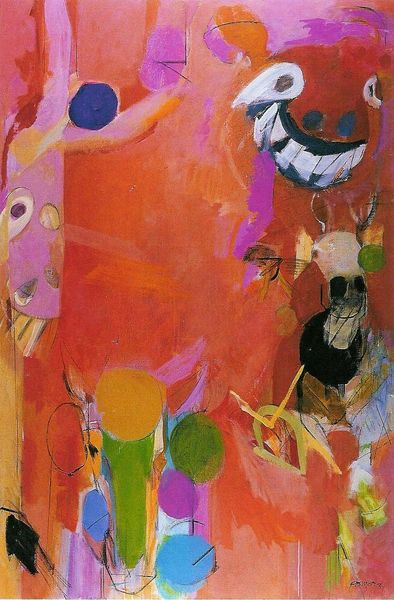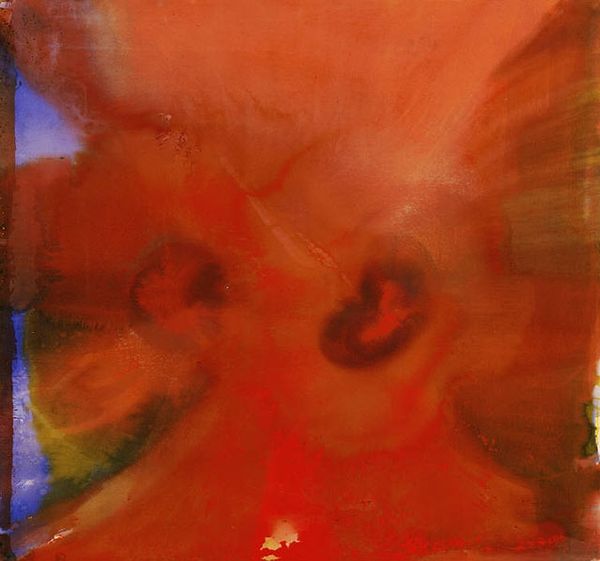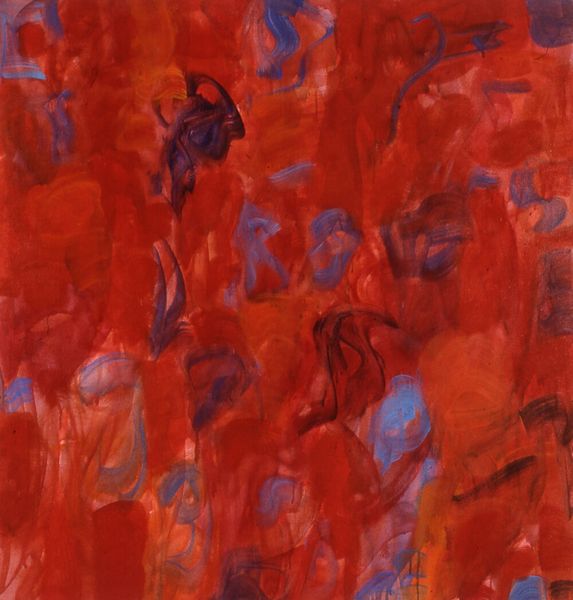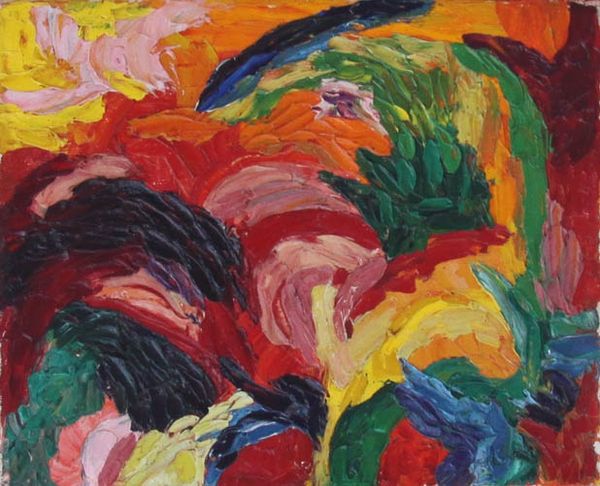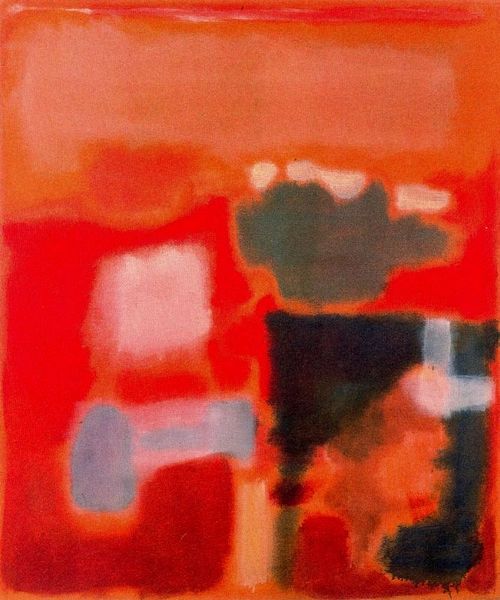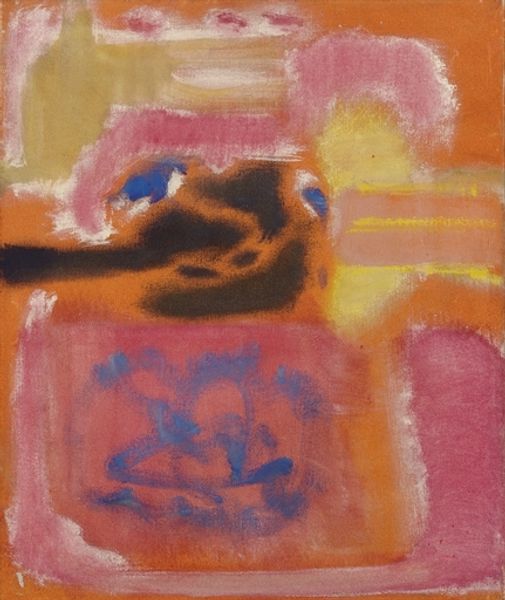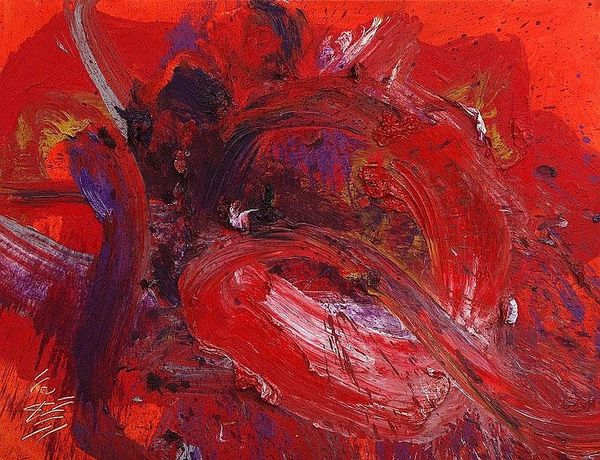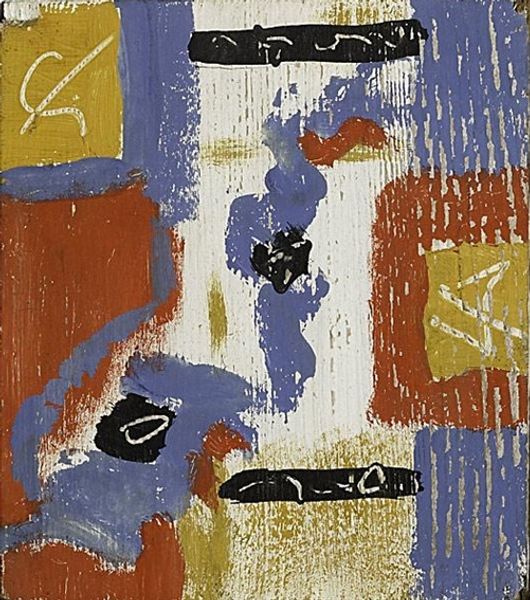
Copyright: Mary Fedden,Fair Use
Curator: Mary Fedden's "Landscape in Gozo," created in 1960 using oil paint, showcases an interesting blend of figuration and abstraction. It almost feels like looking at a memory rather than a strict depiction. What are your thoughts? Editor: It does! I immediately noticed the texture, the impasto seems very deliberate. What do you see in this piece that speaks to the materials and social context of its creation? Curator: For me, the visible brushstrokes and thick application of paint aren't just aesthetic choices; they speak to the labour involved in its creation, a tangible record of the artist’s physical engagement. It challenges the traditional notion of landscape painting as a detached observation. Where and how might the production of oil paint itself factored into its reception, do you think? Editor: Good point, the commercial production and distribution of oil paints in the mid-20th century probably played a big role by democratizing art making. Did this relative accessibility change what was considered high art, or good art? Curator: Precisely! And that access impacted what artists, like Fedden, could explore. This work flirts with abstraction, but also evokes a specific place - Gozo. It asks us to consider not just what is depicted, but *how* it’s depicted, pushing against the rigid boundaries of artistic categories. The island's cultural context surely impacted Fedden’s work… How does it impact your viewing? Editor: It really makes me think about the process of creating art and how interconnected that is to everything around it, not just inspiration but also the more tangible aspects like the paints themselves. Curator: Absolutely. By acknowledging the materiality and the labour, we move beyond simply admiring the finished product and engage with the broader cultural and economic forces at play. Hopefully our listeners will gain insight into this too.
Comments
No comments
Be the first to comment and join the conversation on the ultimate creative platform.
